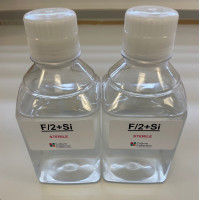Note: for strains where we have DNA barcodes we can be reasonably confident of identity, however for those not yet sequenced we rely on morphology
and the original identification, usually made by the depositor. Although CCAP makes every effort to ensure the correct taxonomic identity of strains, we cannot guarantee
that a strain is correctly identified at the species, genus or class levels. On this basis users are responsible for confirming the identity of the strain(s) they receive
from us on arrival before starting experiments.
For strain taxonomy we generally use AlgaeBase for algae and
Adl et al. (2019) for protists.
| Attributes | |
| Authority | (C.Agardh) Mereschkowsky 1903 |
| Isolator | Lewin (pre 1960) |
| Collection Site | Woods Hole, Massachusetts, USA |
| Notes | Renamed 2018 as per Algaebase; name corrected 2023 as per AlgaeBase (from coffeaeformis to coffeiformis) |
| Axenicity Status | Bacteria present |
| Area | North America |
| Country | USA |
| Environment | Brackish |
| GMO | No |
| Group | Diatom |
| Original Designation | Isolate No. 47 |
| Pathogen | Not pathogenic: Hazard Class 1 |
| Strain Maintenance Sheet | SM_MarineDiatoms15_20.pdf |
| Toxin Producer | Not Toxic / No Data |
| Type Culture | No |
| Taxonomy WoRMS ID | 624065 |
| Equivalent Strains | CCMP127,UTEX 2039 |
| Other Designations | SMBA 281 |
| Synonyms | Amphora coffeaeformis (Agardh) Kützing 1844 , Amphora coffeiformis , Halamphora coffeaeformis |
| Formerly Listed in CCAP as | Amphora coffeaeformis,Halamphora coffeaeformis |
CCAP 1001/1
Halamphora coffeiformis
- Product Code: CCAP 1001/1
- Availability: See Availability/Lead Times
Related Products
CCAP MAF2S-C
f/2+Si Medium
CONCENTRATED STOCKS
Non-sterile concentrated stocks to make up 5 litres of f/2+Si medium. f/2+Si medium is used for cul
CCAP MAF2S-P
f/2+Si Medium
1 LITRE PREMADE
1 litre of sterile, ready to use, f/2+Si medium. f/2+Si medium is used for culturing marine diatoms





